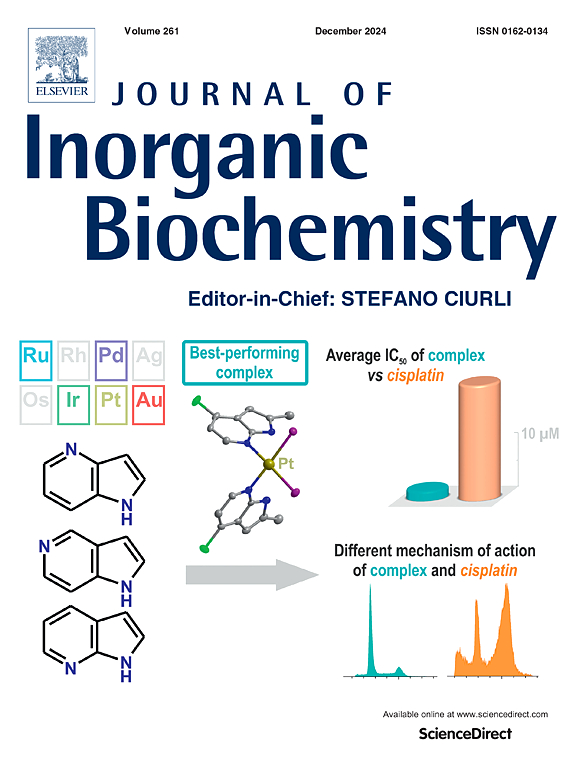通过全原子模拟,理顺了有机-铂杂化配合物向四双杂化结合的结构基础
IF 3.2
2区 化学
Q2 BIOCHEMISTRY & MOLECULAR BIOLOGY
引用次数: 0
摘要
含有互补碱基对的富鸟嘌呤序列可以折叠成非规范的四双工杂交(QDH)构象。这些结构具有独特的结构特征,导致存在一个特殊的结合袋,可以区别于典型的双螺旋结构或g -四重结构(G4)。最近,文献报道了两种有机金属杂化铂配合物,它们能够选择性地和强烈地识别具有横向双茎环的特定类型的QDH。然而,并非所有被研究的化合物的溶液结构都是可用的,这些复合物的不同结合亲和力背后的结构特征留下了未解的问题。在这项工作中,我们使用全原子模拟来解决这一差距,以揭示在原子水平上驱动这些有机铂杂化配合物的高选择性的关键特征。特别是,它们的结合亲和力取决于在g4双相结合口袋中进行的扩展π-π堆叠相互作用与与周围核碱基形成稳定氢键的能力之间的微妙平衡。因此,我们的研究结果为指导选择性靶向QDH结构的新型化合物的合理设计提供了重要的见解。本文章由计算机程序翻译,如有差异,请以英文原文为准。

Rationalizing the structural basis of organic-platinum hybrid complexes binding towards quadruplex-duplex hybrids through all-atom simulations
Guanine-rich sequences containing complementary base pairs can fold into non-canonical quadruplex-duplex hybrid (QDH) conformations. These structures possess unique structural features, leading to the presence of a peculiar binding pocket that can be distinguished from a canonical double helix or a G-quadruplex (G4) structure. Recently, two organic-metal hybrid platinum complexes, able to selectively and strongly recognize a particular type of QDH with a lateral duplex stem-loop, were reported in the literature. However, solution structures are not available for all the investigated compounds, leaving unanswered questions on the structural traits underlying the different binding affinity of these complexes. In this work, we address this gap using all-atom simulations to unravel the key features driving the high selectivity of these organic‑platinum hybrid complexes at an atomistic level. In particular, their binding affinity depends on a delicate balance between the extended π-π stacking interactions performed in the G4-duplex binding pocket and the capacity to form stable hydrogen bonds with the surrounding nucleobases. Thus, our findings provide essential insights to guide the rational design of novel compounds that selectively target QDH structures.
求助全文
通过发布文献求助,成功后即可免费获取论文全文。
去求助
来源期刊

Journal of Inorganic Biochemistry
生物-生化与分子生物学
CiteScore
7.00
自引率
10.30%
发文量
336
审稿时长
41 days
期刊介绍:
The Journal of Inorganic Biochemistry is an established international forum for research in all aspects of Biological Inorganic Chemistry. Original papers of a high scientific level are published in the form of Articles (full length papers), Short Communications, Focused Reviews and Bioinorganic Methods. Topics include: the chemistry, structure and function of metalloenzymes; the interaction of inorganic ions and molecules with proteins and nucleic acids; the synthesis and properties of coordination complexes of biological interest including both structural and functional model systems; the function of metal- containing systems in the regulation of gene expression; the role of metals in medicine; the application of spectroscopic methods to determine the structure of metallobiomolecules; the preparation and characterization of metal-based biomaterials; and related systems. The emphasis of the Journal is on the structure and mechanism of action of metallobiomolecules.
 求助内容:
求助内容: 应助结果提醒方式:
应助结果提醒方式:


